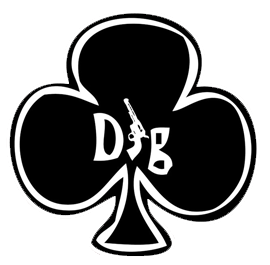
1 East Guitar Quartet: On AllFours
The four members of the 1 East Guitar Quartet ; Zoe Johnstone, J. Scott Matejicka, Kevin Shannon and Paul Martin Wu, met at the Peabody Institute of the Johns Hopkins University. As soloists, they have performed throughout the United States, Canada and the UK. The quartet has performed at guitar festivals and concert series throughout the US including The Alexandria Guitar festival, the Mannes Gutiar festival, the Connecticut Classical Guitar Society's “Guitar Day”, and at the Long Island Guitar festival as part of their “emerging artist” program.
The quartet also has the unique reputation of focusing their music programming on contemporary composers alongside music from the Renaissance. This juxtaposition is a refreshing approach to concertizing and has garnered the attention of renown composers including Bryan Johanson and Terry Champlin who have written works for the group.
The composer of this piece, Bryan Johanson, had this to say about his work:
"On All Fours is meant to be a suggestive title. The composition is built around a firing-order motif in which the running of a four-cylinder engine is imitated by the four guitar blasting away on some simple chords. It is a short work meant to cover a lot of ground quickly, like a test drive in a hot car. The composition is also designed to exploit the members of the quartet equally. My particular view of the guitar quartet is one of registration and virtuosic equality, where each instrumentalist may be called upon to serve as a soloist, accompanist, or interwoven ensemble member."
There are a few things in particular which I enjoy about this this piece and this performance. At the start of the composition, the four members of the quartet toss around a chord progression in successive outbursts. This is a fantastic piece of quartet composing because of the inevitable color changes that occur as each guitarist features a tone color that is unique unto themselves. Furthermore, you should listen to this piece with headphones on and enjoy the spatial quality of the performance as you can also hear the location of each guitarist.
A second feature of this work I enjoy is the way the composer writes for the full range of sound potential from the unamplified instrument. He achieves this by asking the musicians to explore percussive possibilities, as well as all other permutations of extended techniques to create an expressionist atmosphere during the listening experience. Although it is an exceptional recording, this piece begs for the live concert stage. Seeing the myriad of ways in which the quartet interacts and performs to achieve these sounds is an illuminating experience to say the least.
The quartet may have disbanded, but the album is still available for sale and can be found here. It's a great looking and wonderful sounding record loaded with music that covers a broad spectrum of history and sound. Guitar-heads should love the album for its diversity, blatant talent, and for the appeal of something completely different and unique. You dig?

